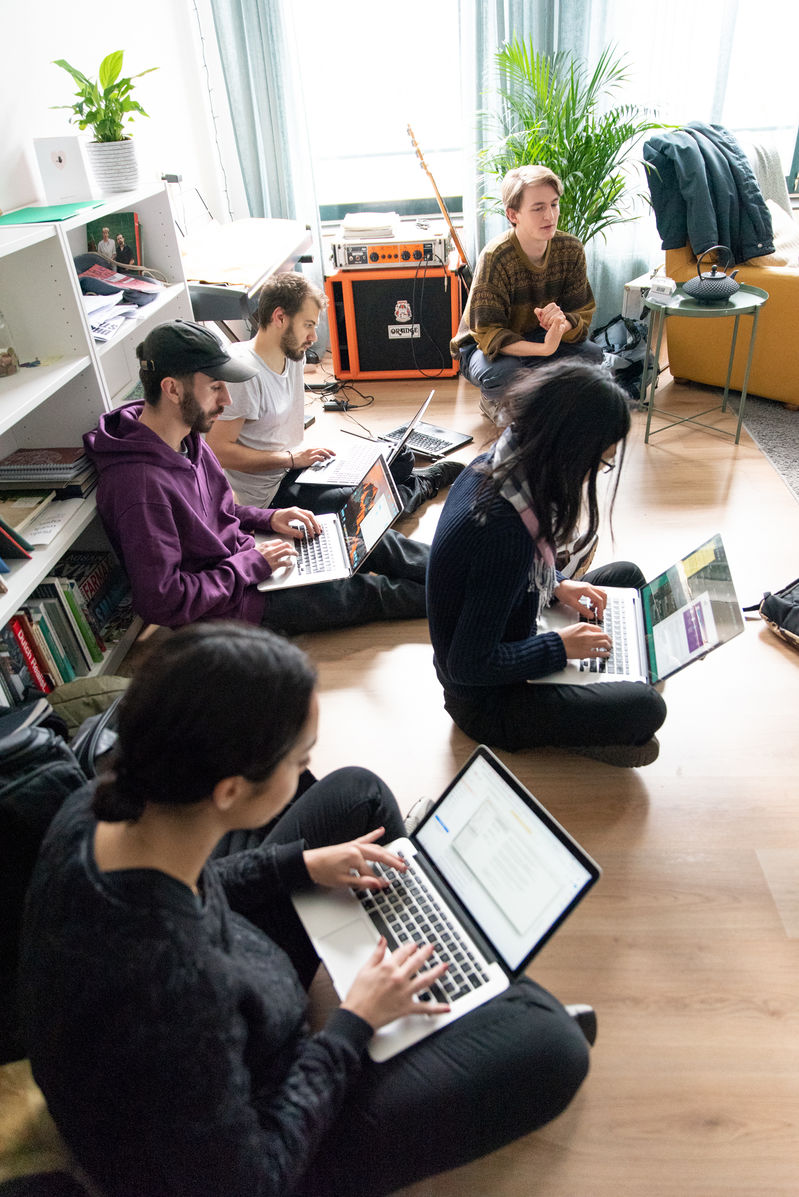On January 2019 we cycled through each other’s homes to set our personal servers. We were learning about routers, service providers, and trying to grasp the concept of network. In order to have a better understanding of the subject, I started to look for other groups similar to ours. Because networks can morph into different shapes, I focused on small partnerships to find out how they dealt with the accountability, sustainability, and scalability of their projects.1 I started my research and quickly understood that most websites were linking other websites and I was caught in an infinite loop of click click clicks. However, most links were broken and servers were down. I was late, and I’d just missed the party.
Keeping a network alive is a challenge well described in Andreas Broeckmann’s text about Mag.net.2 Mag.net was a magazine network for independent electronic publishers. Following the idea “Collaboration is Better than Competition”, the network intended to be a support group for independent publications. This culminated in the creation of a common subscription system to increase circulation and boost sales. The initiative didn’t accomplish much success, and in 2005 the Mag.net members acknowledged the end of the collective. Nonetheless, is curious to see how projects that came out of Mag.net, or later through their members, still continue today. Broeckmann confirms that the “short history of Mag.net (...) should however not be read as an obituary, but as a monument to the desire for sharing and working together.” Maybe the main goal of a network doesn’t need to be a material object or a final project but is in the in-betweens that are created unusual connections. Some would call this the paranodal space.
I wasn’t worried about our websites going down, but I was thinking about what would be the reminders of our efforts to host and build this network. Being online all the time is impossible, and may be undesirable. High availability and uptime usually mean more servers, electricity, and pollution. In 2014, a collective discussion about feminist servers3 addressed this apparent weakness with normality: “[A feminist server] tries hard not to apologize when she is sometimes not available”.
Cyberfeminism was often brought up during my search. I found networks created by feminist media activists such as the Grrrl Zine Network,4 FACES5 or the Old Boys Network.6 The Old Boys Network is a network that started in 1997 dedicated to cyberfeminism and they describe themselves as “a real and a virtual coalition”. Indeed most digital networks have actual places for meetings, discussions, exhibitions, etc. In our network (which I now realize is nameless) we were meeting several times per week and that was an important time to discuss the path for our group publication.
Meetings in the physical world, IRL, are a requirement of Netless.7 This is a project using the city transportation grid to deliver information, where devices travel concealed in trains, buses, trams, and others. When different devices are close to each other it’s possible to exchange information. Netless tries to create a network that dodges internet fees and government surveillance, investing in peer-to-peer connections. However, it stills relies on infrastructures built and maintained by the government, which to me seems like a paradox. The more we speak about decentralized networks and autonomy, the more I wonder if complete independence is even possible, as infrastructures become vital for the existence of digital networks. I also have to deal with another level of dependency. Because I couldn’t host myself, my server borrows space and internet access from Artemis’ house.
As our network was lodging itself, I started prototyping some tools to freeze moments in time. The tools serve this purpose in an experimental way, without trying to provide one solution to the instability of a network. Between broken links and 404-pages, I was facing the vulnerability with my project: collecting the connection points between nodes in our network.
For me, the process of becoming self-hosted was complicated and I wonder how an intricated process can become accessible without the same support I had. I found beyond interesting the chat protocol we discovered and installed, XMPP. Funny enough, our network would still discuss things on Whatsapp. It was hassle-free, user-friendly with a clean design. Being an alternative in a market where corporations make such profit that gives them unlimited resources, can be discouraging.
In the end, is important to remark how our network exists in the physical world. Not only in the zine version of the website, but in the servers that we built, all the cables and hardware, the work put on the websites, the energy we used, the waste, and all the conversations and new relationships between the members.
1Some authors (Ned Rossiter, Geert Lovink and more) believe that networks in order to survive need to have a form of organization similar to business models. Geert Lovink talks about the accountability, sustainability and scalability of networks in “The principle of notworking concepts in critical internet culture”.
3 Feminist Server Discussion at THF, August 2014 (Calafou)
pad.constantvzw.org/p/feministserver
6 Old Boys Network, The Mode is the Message — the Code is the Collective!
obn.org/
7 Netless, independent, urban communication platform
k0a1a.net/netless/

